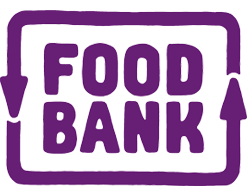Allergy members - how do you shop for food?
Posted by: looklively
4th Jun 2014 12:52pm
Ziah
- 5th Jun 2014 04:56pm
I shop around. I cannot buy everything in one pace, but over the last 9 years of being celiac/gluten intolerant, I have learned that unless I want to bankrupt us, I have to give up a lot of foods. Take for instance pasta. A 500g bag of Balducci pasta was advertised at my local supermarket last week for 99c.A 250g box of gluten free San Remo pasta is $3.98 (the new Heinz GF pasta was on special at Coles this week for $3.00) - meaning 500g would cost $7.96 - or 8 times as much as regular pasta. Bread - aside from being pretty average tasting and almost useless for a sandwich (in both size and performance) is price prohibitive, with the average price of a gluten free loaf around the $7 mark and with only 11 slices in a pack. Biscuits - gone, cakes - gone. Not because there aren't nice-tasting gluten free alternatives, but because of the price and the far higher sugar/carbohydrate, fat and gluten-replacement ingredient content. Even muesli bars - the gluten free ones are far higher in sugar/carbohydrates (making them unsuitable for me as a diabetic) than regular ones. Even something as simple as breakfast cereal becomes a nightmare - none of the mainstream, affordable cereals are gluten free (not even rice bubbles or cornflakes!), and those that are gluten free are incredibly expensive as to become a rare treat. Porridge is out for many celiacs as we react just as badly to oats as to wheat, rye, barley and spelt (and all derivatives thereof) among others. I personally can't even use buckwheat, and corn must be used in small amounts too - so buckwheat bread and pancakes are out.
Frozen meals are out completely - none of the regular ones are gluten free, the gluten free ones are twice the price. Pastry - 4 sheets of GF pastry that is average quality is $10 or more, while 10 sheets of regular pastry is less than $5 in my local supermarket. Anything crumbed is out. Anything with a sauce is out. Anything with spices and flavourings is usually out, since they tend to fill them with wheat flour. Simmer sauces and meal bases are out, because they all use wheat flour as a thickener and other wheat derived ingredients for flavours, preservatives etc.
You become adept at reading packets - and even when you find something that is gluten free (by ingredient) you still have to read the label every time you buy it, because manufacturers change their ingredients without notice, and something that once was gluten free (SPC baked beans) may not be the very next time you buy it (they aren't anymore). Or, because it's all too hard, we turn to lean meats and fresh produce for the bulk of our meals - but of course, they're not cheap. There is almost nothing in my house that came in a packet (save for some GF flours and other baking needs, a couple of packs of spaghetti and macaroni for special occasions and some herbs and spices - and a whole mess of cat food). I make a lot from scratch - including tortillas and fettuccine, all casseroles and slow cooker recipes, all gravies and sauces.
It - being celiac - has forced me to become a better and more creative cook - but now, if we have people over, they can't even tell what I serve them is always gluten free, and often vegan and dairy-free, too. I generally cook the same meal for me and my non-celiac husband, but he gets to eat regular bread for his sandwiches, and regular crumpets as a treat - and what he eats when he's at work is his business :)
Oh, and the question about whether products advertise themselves well enough - sometimes they do, but strict celiacs still need to be vigilant because some products still contain gluten derivatives that we react to - like oats, glucose, xanthan and guar gum, buckwheat (only a minority), excess fructose, lactose and other proteins which a few celiacs react to just as badly as if it were a wheat bread sandwich. Many celiacs still don't know that there are a whole lot of other foods which cross-react in the gut of a celiac that aren't strictly gluten-containing products! (Source:http://simplygluten-free.com/glutenfreemagazine/learn/cross-reactive-foods-gluten-free-foods-that-mimic-gluten-and-make-you-sick/ and hundreds of other sites)
And here is a list of hidden gluten ingredients - http://eatlocalgrown.com/article/11764-hidden-gluten.html - it's everywhere, in everything, and hard to find unless you know what you're looking for....
Help Caféstudy members by responding to their questions, or ask your own in Café Chat, and you will get the chance of earning extra rewards. Caféstudy will match these and donate equally to our two chosen Australian charities.



